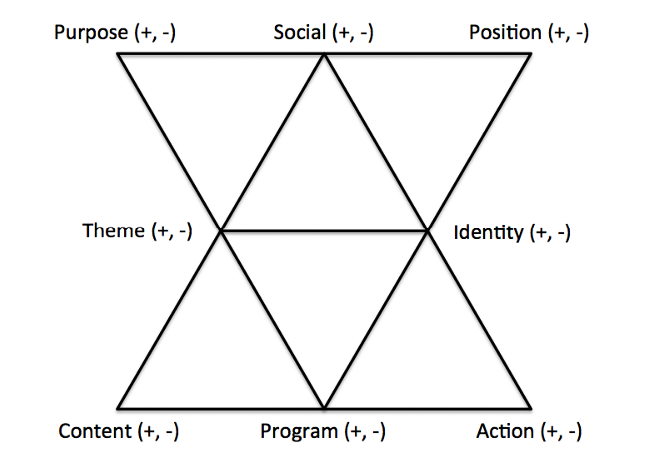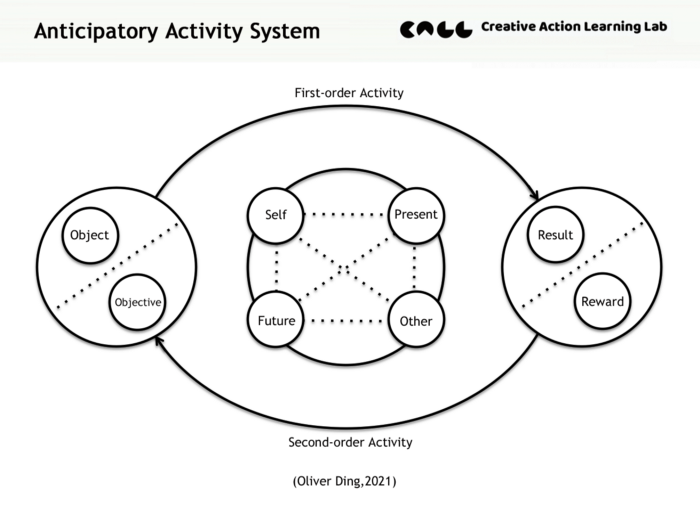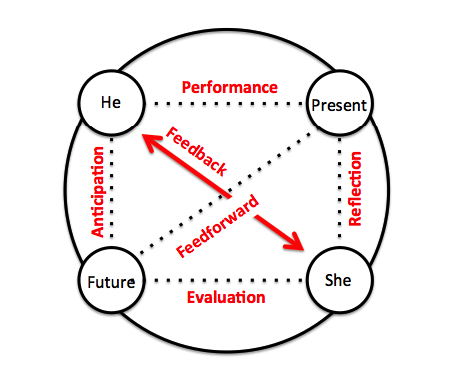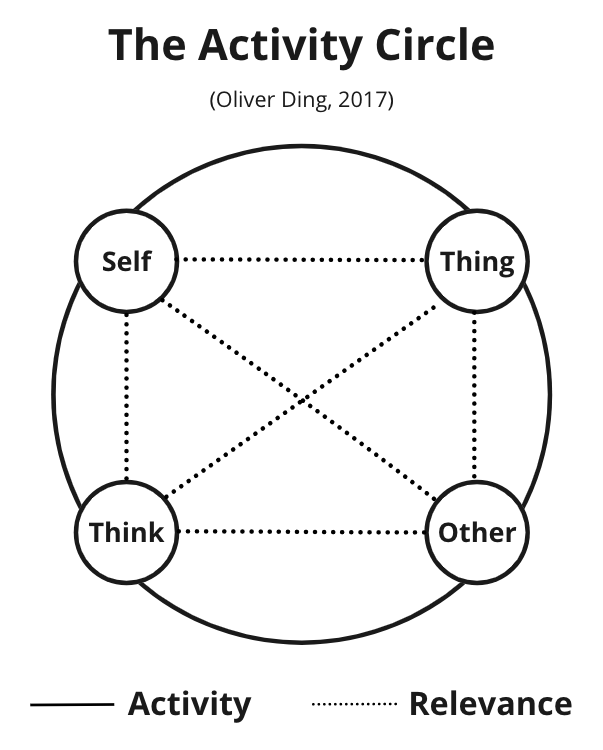Z Lab @ Activity Analysis Center

Activity Analysis Center works on two things: 1) knowledge curation, which is about curating various theoretical approaches to Activity Theory and social practice theories, and 2) knowledge creation, which refers to my own theoretical models and frameworks about human activity and social practices.
The category of "Z Lab" is for sharing the outcome of my knowledge creation. The letter "Z" refers to a journey of long-term thoughts. See the picture above.
Three years ago, I started the Activity U project which is a Knowledge Curation project. The journey led me on the journey of Knowledge Creation.
I have made three things in order to expand the landscape of the traditional Activity Theory:
- The Project Engagement Approach
- Anticipatory Activity System
- The Activity Circle
These three things are theoretical frameworks and abstract models. I also made many concrete models for expanding these frameworks. Some concrete models are inspired by traditional Activity Theory.
I also worked on the Ecological Practice approach which is inspired by Ecological Psychology and other social practice theories. Moreover, I also worked on the "Activity Theory - Ecological Psychology" dialogue. In this direction, I made the following two frameworks:
This article aims to introduce the above five abstract models. I will share more details about them under the "Z Lab" category.
The Project Engagement Approach
The Project Engagement Approach expands Andy Blunden's approach of "Activity as Formation of Concepts" and "Project as Unit of Analysis of Activity" from a meta-theory to an abstract model with several concrete models.
Initially, I used the term "Project Engagement" to name the second part of my 2020/2021 book Project-oriented Activity Theory which introduces Andy Blunden's approach to Activity Theory. The Project Engagement (v1.0) approach has three modules: the Developmental Project Model (see the diagram below), the Zone of Project framework, and the Cultural Projection Analysis method.

From Jan 2022 to June 2022, I worked on testing Project Engagement (v1.0) and realized that I should expand it to the "Project - Project" relationship.

In July 2022, I expanded Project Engagement (v1.0) to v2.1 with several new modules. Inspired by the above three keywords, I wrote an introduction to the new version of the approach. You can find more details in Project Engagement (v2.1) as an Innovation Approach.
Anticipatory Activity System
The Anticipatory Activity System (AAS) framework is inspired by Activity Theory and Anticipatory System theory. It aims to offer an abstract model for understanding "Self, Other, Present, Future".
While the traditional Activity Theory focuses on "Exploitative Activity", the AAS framework is more about "Exploratory Activity".

The core of the AAS framework is the Transactional Anticipatory System which considers the “Self, Other, Present, Future” situation. See the diagram below:

You can find more details in The iART Framework and The “Relevance” Thematic Space.
I also worked on expanding the basic model of AAS. The diagram below highlights five movements of the AAS framework: Unfolding, Discovering, Producing, Modeling, and Storytelling.

In order to test the AAS framework, I applied it to Life Transitions (LT) and developed the AAS4LT framework. It considers “Life Discovery Project” as Second-order Activity and “Life Developmental Project” as a First-order Activity.
Based on the AAS4LT framework, I developed the AAS4LT 1:1 life coaching program which is an eight-step service.

You can find more details in Life Discovery: The AAS Framework.
The Activity Circle
The third thing is called Activity Circle. See the diagram below. The original idea of the Activity Circle is an idea called the "Activity - Relationship" perspective which was developed in 2017. In the past several months, I rediscovered it with several new triggers.

Several months ago, I found Benny Karpatschof’s 2000 book Human Activity: Contributions to the Anthropological Sciences from a Perspective of Activity Theory. Though I have read many books and papers about Activity Theory, Karpatschof’s theoretical approach opened a new door for me. The most important idea of his account is to bring Sign/Meaning/Concept back to Activity Theory.
According to Benny Karpatschof, “…the full context of activity in which the category of meaning (“ideas”) is situated can be seen. In the feedback circle, there is an operational as well as a referential mediation. I call the referential side meaning production. The other side is the category of object production, where production is to be understood in a broad sense, including interventions that only modified the object. If we now consider the relation between meaning and object production in human activity, there are 3 logical types: 1. The object-reflecting meaning production, 2. The symmetric interplay of objects and meaning production, 3. The concept based object production. ”(2000, p.248)
Benny Karpatchof’s approach to human activity considers both Tool and Sign. This approach echoes Lev Vygotsky’s two types of mediating tools. This is the reason that I pay attention to Benny Karoatchof’s 2000 book.
The difference between Benny Karpatschof’s model of Human Activity and my model of Activity Circle is the former only talks about the individual—object interaction and the latter considers the self—other relevance.
The Self - Relevance Relevance is part of the AAS framework. However, the AAS framework is only about "Present, Future". I need a model to discuss material/meaning in general.
What can we do with the Activity Circle? You can find an answer in Diagram Blending: “Activity Circle” + “Concept Dynamics”.
The Lifesystem Framework
The Lifesystem Framework is an application of the Ecological Practice approach.
The word “Life” is inspired by the term “Lifeworld” from Alfred Schutz while the word “System” is inspired by Anticipatory System Theory. The Lifesystem framework considers the “Lifeway — Lifeform” hierarchical loop as a whole system that defines a new unit of analysis.

The term “Lifeway” is inspired by the ecological psychologist James. J. Gibson’s writing: “The natural environment offers many ways of life, and different animals have different ways of life.” I use the term “Lifeway” to refer to the “human—material” engagement which is related to physical environment and affordance.
The term “Lifeform” is inspired by the philosopher Ludwig Wittgenstein’s writing: “It is easy to imagine a language consisting only of orders and reports in battle…And to imagine a language means to imagine a form of life…Here the term ‘language game’ is meant to bring into prominence the fact that the speaking of language is the part of an activity or a form of life.” I use the term “Lifeform” to refer to the “human-human” engagement which is related to social environment and supportance.
The diagram below is the standard model of the Lifesystem Framework which considers eight operational concepts.

I also developed a typology of Lifesystem and applied it to discuss the landscape of social life. See the diagram below.

You can find more details in Lifesystem: Modeling Ice Skating and Other Social Practices.
SET (Structured Engagement Theory)
The SET Framework was originally named the Ecological—Activity Hybrid Approach. It was developed from 2017 to 2020 when I worked on several projects which refer to a new type of social action platform.
Traditionally, Activity Theory uses "Subject - Mediation - Object" as a basic unit of analysis. The Activity system model expands the basic unit of analysis to "Subject - Mediation - Object - Rules - Community - Divisions of Labour". However, I found there is a gap between Activity Theory and Intersubjective Social Design.
For example, I worked on a one-to-one video talk product from 2017 to 2018. Later, I worked on other projects which adopt Structured Engagement as a design pattern. These projects share the following aspects:
- Host: a special type of actor who hosts the whole activity.
- Structured Engagement: the activity is human-to-human interactions with a special structured process.
- Environment: the environment is also part of the design of the activity.
I started learning Activity Theory, Ecological Psychology, and other theories around 2015. Since then, I have often used some theoretical concepts such as Mediation from Activity Theory, Affordance from Ecological Psychology, etc for our product development discussions.
I realized the Activity System model, which is a popular theoretical framework of Activity theory, is not an ideal framework for theorizing above intersubjective social actions. In 2019, I developed the Ecological — Activity Hybrid Approach by adopting ideas from Activity Theory and Ecological Psychology. In 2020, I renamed the approach SET which stands for Structured Engagement Theory.

I also adopted an important concept from Ecological Psychologist Roger Barker's Behavior Settings Theory.

Barker developed a systematic analysis method for the Behavior Settings theory. One module of his method is “Zone of Penetration” which refers to the penetration dimension of Behavior Settings. He identified seven Zones of Penetration(1989, p.127–128).
Though the SET framework doesn't adopt the whole approach of Behavior Settings Theory, I roughly use Zone of Penetration for discussing environments of SET.

In 2021, I applied the SET framework to study digital whiteboard platforms such as Miro and Milanote. I designed an expanded diagram for my research. This expanded version has three types of environments:
- Situational Environment: For example, a Miro board and related events.
- Organizational Environment: For example, the team behind the Miro board.
- Technological Environment: For example, Miro and other related digital platforms.
You can find more details in The SET Framework [Hybrid Approach].
